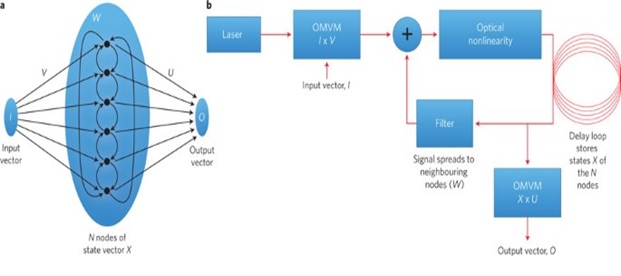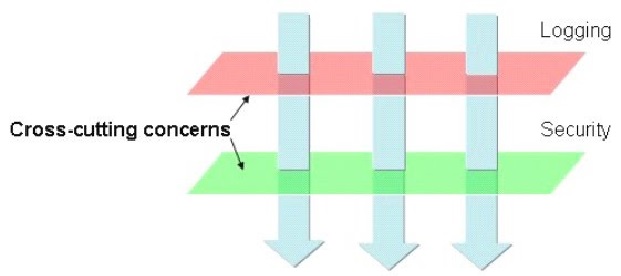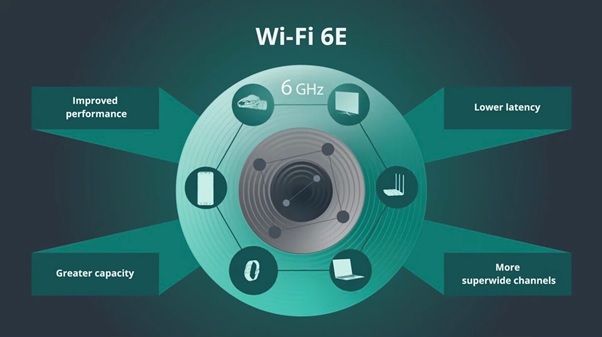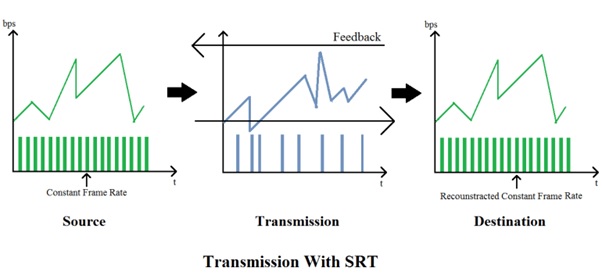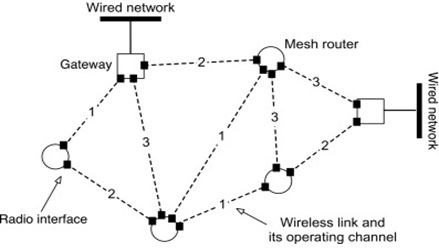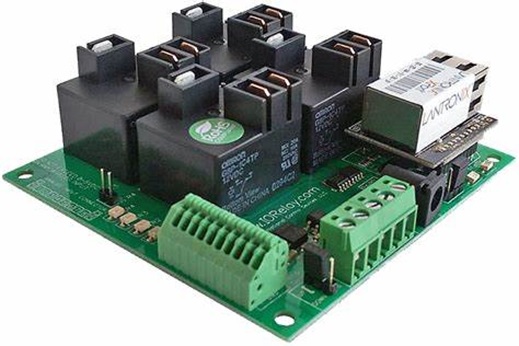Wi-Fi 6 vs Wi-Fi 6e
Wi-Fi 6 is the next-generation standard in Wi-Fi technology built in response to the growing number of devices in the world. Wi-Fi 6 uses both 1024-QAM to provide a signal packed with more data and a 160 MHz Channel to provide a wider channel to make your Wi-Fi faster. This means you could enjoy a stutter-free VR or stunningly vivid 4K and even 8K streaming. More importantly, technologies like MU-MIMO and OFDMA generated from Wi-Fi 6 provide up to 4x larger capacity and to handle more devices.
Wi-Fi 6E is identical to Wi-Fi 6 with an addition of “E”, which stands for “Extended” as in an extended number of the usable wireless band, the 6 GHz band. So simply put, Wi-Fi 6E means Wi-Fi 6 extended to the 6 GHz band. 6 GHz is the new frequency band ranging from 5.925 GHz to 7.125 GHz, allowing up to 1,200 MHz of additional spectrum. Unlike the existing bands on which channels are currently crammed into the limited spectrum, the 6 GHz band exists without overlap or interference. Access to the 6 GHz frequency brings more bandwidth, faster speeds, and lower latency, opening up resources for future innovations like AR/VR, 8K streaming.[1]

Figure 1. Points of wi-fi 6 vs wi-fi 6e
Wi-Fi 6 vs. Wi-Fi 6E
Wi-Fi 6 brought with it several new features to increase wireless performance compared with Wi-Fi 5. Those include orthogonal frequency-division multiplexing access, which enables routers and devices to use bandwidth more efficiently; target wait time, which reduces power consumption and saves device battery life; and increased speed and range.
As wireless vendor Net gear notes in a post on its site, Wi-Fi 6E builds on these features and includes support for up to 14 80MHz channels or seven 160 MHz channels. More available channels mean more available spectrum for Wi-Fi service and less overlap between networks in crowded areas like apartment complexes or offices, the company notes.
As CNET reports: “In layman’s terms, if the 2.4GHz band is a one-lane country highway and the 5GHz band is a three-lane interstate, picture the 6GHz band as a shiny, new seven-lane superhighway, and only 6E devices get access to the onramp.”
Another technical difference between Wi-Fi 6 and Wi-Fi 6E is that 6E does not require dynamic frequency selection channels. Unlike 160MHz channels in the 5GHz wireless band, devices operating in 6GHz don’t share the spectrum with radar devices or TV stations. As a result, people who cannot take advantage of 160MHz channels because they live near places like airports or TV stations can benefit from vacant 160MHz channels.
Wi-Fi 6E also has mandatory Wi-Fi Protected Access 3 security controls, which is the highest Wi-Fi Alliance security certification. WPA3 provides the latest in security and authentication protocols. As a result, 6GHz Wi-Fi traffic is more secure than ever, and 6GHz networks are more difficult to hack.
Yet another benefit of Wi-Fi 6E is that it operates differently in terms of power limitations. Typically, faster Wi-Fi is directly related to utilizing wider channels, and with the added spectrum it’s likely we’ll see greater adoption of 40MHz and 80MHz channels, Vallance adds. With Wi-Fi 6 and earlier, one of the major issues with wider channels — aside from limited spectrum is that doubling the channel bandwidth also doubles the noise floor. In dense environments, this becomes very problematic as the client now needs to overcome the additional noise floor in order to have effective communication with the access point.[3]
References:
- https://www.tp-link.com/us/blog/86/what-s-the-difference-between-wifi-6-and-wifi-6e/
- https://www.howtogeek.com/519823/wi-fi-6e-what-is-it-and-how-is-it-different-from-wi-fi-6/
- https://statetechmagazine.com/article/2021/08/wi-fi-6-vs-wi-fi-6e-benefits-whats-difference-perfcon
Cite this article:
Thanusri swetha J (2021), Wi-Fi 6 vs Wi-Fi 6e, AnaTechMaz, pp. 22



